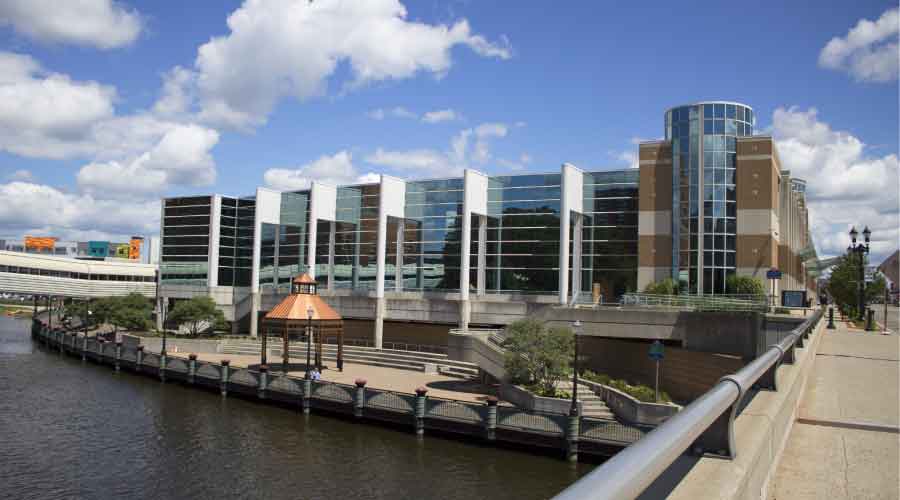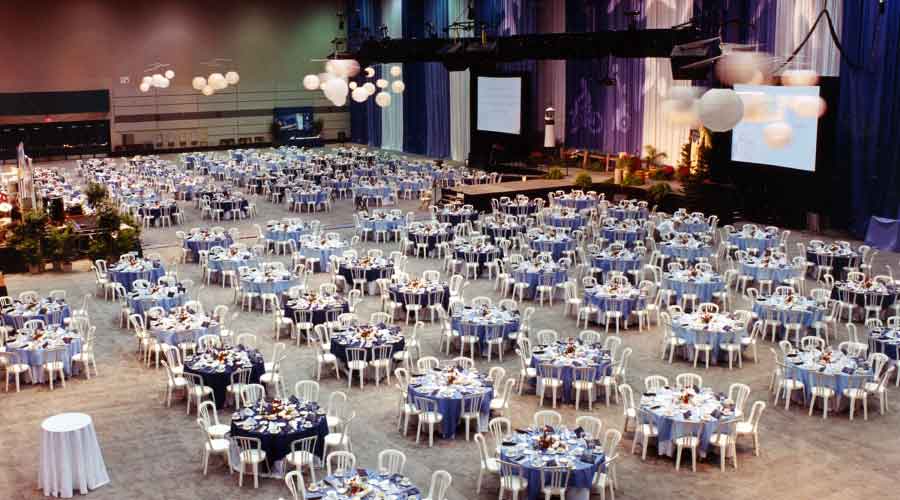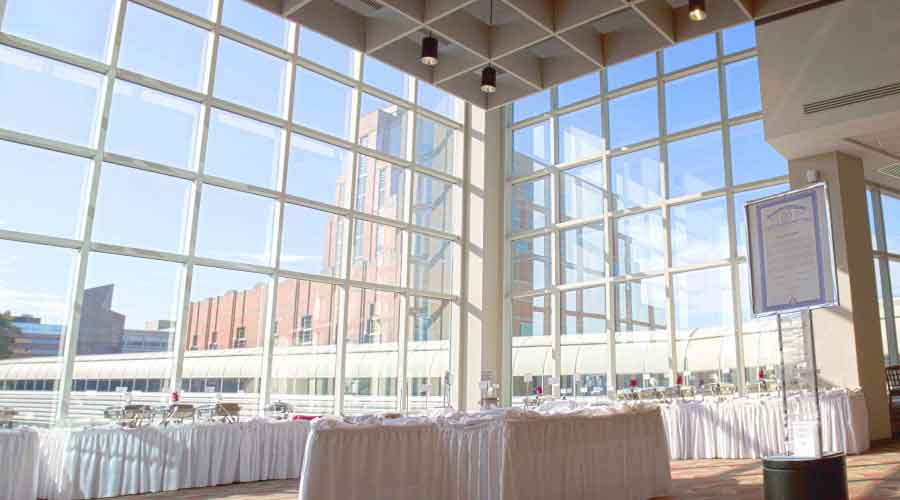Energy Management System Improves Convention Center Efficiency
Energy management systems upgrades improve efficiency at Lansing Convention Center.
By Dave Lubach, Managing Editor
As a leader in the entertainment industry, Scott Keith likes to say he’s in the memory-making business.
Whether those memories happen at a convention, music concert, minor league baseball game or during a round of golf, it’s Keith’s job as the president and CEO of the Lansing Entertainment and Public Facilities Authority in Michigan to ensure these same people enjoy their experiences enough to keep coming back.
But before Keith started trying to convince bands and trade shows to make stops in Lansing, his career was in facility operations, so he also understands the importance of efficient buildings.
“People want to know that there are technologies and people in place that will keep you safe,” Keith says. “But I also think comfort is pretty good, because there’s nothing worse than sitting in a conference and sweating like crazy. If something’s not working right, you’re going to have a bad experience. Those two things, those two elements, really do add to someone’s selecting where they’re going to host an event.”
During the last decade-plus, the 300,000 square foot Lansing Convention Center has been relying on a smarter energy approach to operating the facility through the use of building automation systems and metering.
Staying open
Concert promoters and convention organizers aren’t as concerned about a facility’s water consumption or energy use rates when selecting venues for their events as they are with security, seating, and the fan experience.
But if a venue is forced to cancel a show because of an equipment failure, the financial repercussions can be felt by the facility and the clients for a long time. And the facility’s reputation could take a major hit.
About 12 years ago, the convention center was experiencing a failing HVAC system and the concern was air conditioning potentially failing in the midst of a warm July day. Since the system was aging anyway, it was time for new technology and a new direction.
“We were replacing compressors left and right,” Keith says. “Not only was it not efficient for cost savings or actual energy usage by replacing the compressors, there’s the labor. So, we started researching options for the replacement of that kind of system.”
The ensuing research led the convention center on a path to an energy management system.

“It grew into seeing what other things we need to look at that will not only improve our utility usage, but our comfort to guests,” Keith says. “That just kind of steamrolled into a larger package of infrastructure pieces, particularly around building systems that we could improve on.”
The first step was finding a more efficient way to regulate the temperatures in the building. The convention center considered bringing chilled water in from the utility company that was located on the nearby Grand River, but the cost for such a project was prohibitive.
Leadership opted to build its own cooling plant on site. The construction led to new opportunities with new systems while working with Honeywell Building Technologies to implement them.
“That just grew into light sensors or occupancy sensors, security systems, all these things added on to the building,” Keith says. “They improve the experience of the consumer, and that was critical. It needed to be a win-win situation.
“And now we’re looking at the next phase.”
The next step for the convention center is to upgrade the steam boiler system that is nearly 30 years old and reaching the end of its lifecycle.
“We’re always looking at technologies that will certainly improve us and make us up to date,” Keith says.
Measurables
The embrace of smart energy principles at the Lansing Convention Center and other properties has helped Keith and his staff of six maintenance engineers operate the facilities in the most efficient ways.
“It’s always one of the hardest parts of the job,” Keith says about pushing for energy upgrades. “A lot of it is backhouse, not a new shiny toy in front of (leadership), but you’re putting in infrastructure and improving technologies.”
A $6 million investment in energy management systems has helped the convention center realize a 29 percent reduction in energy consumption and a 28 percent reduction in carbon dioxide emissions over the years.
The automated building systems capability and metering ability helps Keith’s team make system changes throughout the day to improve customer comfort.
“After lunch, convention goers are always cold,” he says. “But if you have the right technologies from 1 p.m. to 2:30 p.m., you need to raise it by 2 degrees to offset their body temperature change. After you eat, blood flows to the center of your body or your hands and feet start getting cold and you complain about that space being chilly even though the temperature in the space hasn’t changed. Having that kind of knowledge operationally in the background makes for a better experience.”
The maintenance team is trained to monitor all of the systems operating at the convention center properties.

“We have full-time staff to monitor the amount of water systems we have, and alarm systems for the building automation system to tell us if something is running out of whack,” Keith says. “We have meter reading systems implemented in the last four or five years that have been really advantageous for us to work with the utility companies because they want to know usage.”
Other areas where the Lansing authority has benefited from the use of smart technology includes the Jackson Field Stadium, the minor league baseball home of the Oakland A’s affiliate for the Lansing Lugnuts.
In addition to occupancy sensors for lighting, Keith is looking into technology that can help regulate the HVAC systems at the stadium when suite attendees are leaving doors propped open, wasting energy with the air conditioning system blowing cold air out into the atmosphere.
“We have these large unfolding doors to the outside. While most occupants on a beautiful day leave the door propped open, what if they can now sense the door is open and they can cut off the AC?” Keith says.
At the authority-operated Groesbeck Golf Course, Keith is looking into the installation of lighting sensors in the clubhouse that can switch the systems on and off based on occupancy and natural lighting conditions.
“We’re looking at getting sensors in spaces where we’re above 70 percent in natural light, so they don’t have to flip a switch but out of habit people do that regardless of how bright it is,” he says. “That’s some of the ways we want to look at things. The golf course is a great example because the clubhouse has so many windows and on a sunny day, do they really need to have lights on? If we had a sensor, like a thermostat, we could turn the lights off. We have to make sure we’re safe, but then how much would that reduce our utility costs?”
Security counts
As technology continues to improve, even facility veterans like Keith are constantly learning about new capabilities of what their building management systems can do. While energy management is a priority at the convention center and other similar facilities, another aspect that commercial institution managers have to consider are systems that can help detect active shooters and diffuse workplace violence situations.
Keith and other managers are learning that security systems and energy management systems can work as one to keep buildings safe and efficient.
“I think we’re learning that these systems can be integrated together,” Keith says. “We’re looking at new and creative technologies and how they can be integrated not only for energy savings and making our buildings safe and smart, but also for the customer and growing revenues, which I think a lot of building managers are looking at.”
Dave Lubach is the managing editor for the facility market team. He has seven years of experience writing for the facility management industry.
Related Topics:














